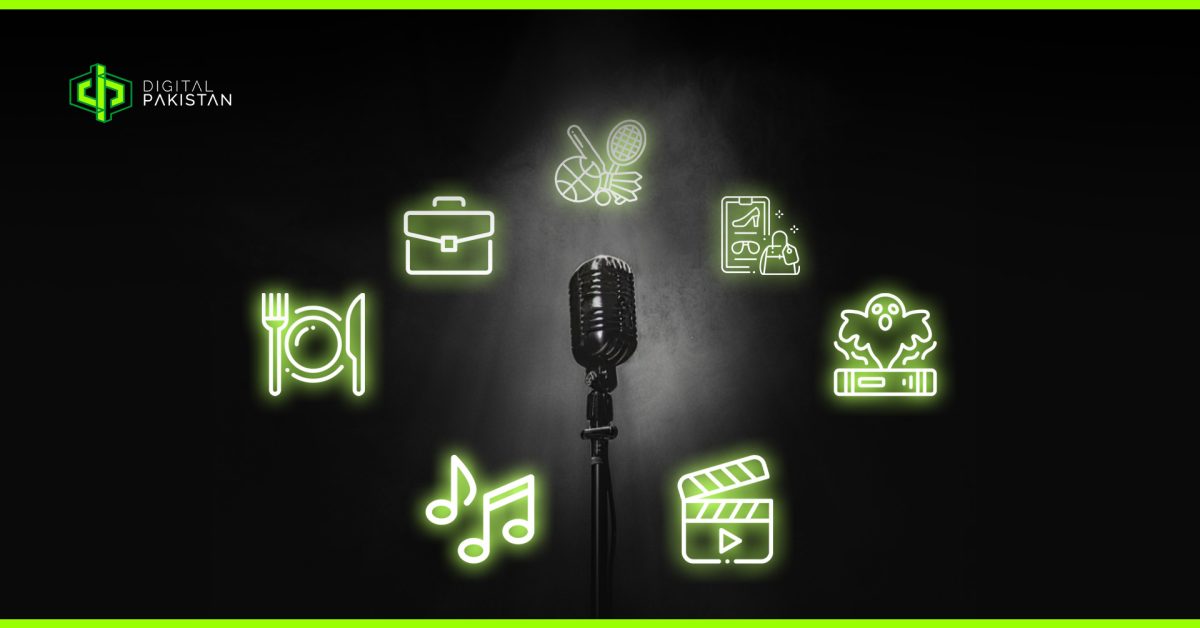
Last Week in Science; 1st to 7th April
April 14, 2024
Game Now Takes Center Stage: Jazz’s ‘Wow Summer Camp’ Event
August 28, 2024Beyond Conversations: The World of Podcasts
A few years ago, the idea of making money from real-life situations was limited to fields like journalism or sitcoms. However, today, digital media has infiltrated every aspect of our lives, even affecting the way we communicate with others. It’s fascinating to see how this has given rise to new opportunities, such as monetizing conversation – through podcasts.
As evidenced by the success stories of podcasts like “The Joe Rogan Experience,” “Serial,” and if you’re a cricket fan like me, “The Grade Cricketer,” the potential for turning conversations into revenue-generating content has transitioned from a niche endeavour to an accessible option. Many wonder, “Is this something anyone can do?”
Truth is, probably. Here’s what you need to know.
Pre-Production
To begin with, you need to be sure that this is something you want to pursue because getting started requires a modest investment in equipment. At the very least, you need a high-quality microphone and reliable recording software to lay the groundwork for crisp and professional sound. This ensures that your message comes through loud and clear, captivating your audience.
Before hitting the record button, it’s crucial to define your podcast’s niche and target audience. What topics resonate with you? Who do you want to reach? Answering these questions helps tailor your content for maximum impact, establishing a solid foundation for your podcast.
Production
Once equipped with the right tech and a clear focus, you can dive into content creation. Come up with engaging episode ideas and a structure that aligns with your audience’s interests. Whether it’s interviews, storytelling, or educational content, a well-crafted podcast makes sure you have an active listener base, and that your content is coherent throughout.
When it comes to recording your podcast, finding a quiet and distraction-free environment is crucial. A room with minimal background noise and good acoustics can make a significant difference in the quality of your audio. Consider rehearsing your script and doing soundchecks before recording helps you avoid unnecessary mistakes and save time during post-production.
Post-Production
Of course, recording your first episode is exciting, but you need to be prepared for the real work that happens in post-production. When it comes to audio editing for podcasts, different software options cater to different needs. Audacity is great for beginners with its free and user-friendly interface. Adobe Audition is a professional-grade software with advanced tools but comes with a subscription-based model. GarageBand is an excellent choice for Mac users, with an intuitive interface and built-in audio presets. Hindenburg is designed explicitly for podcasting, with features like automatic levelling and voice profiling, but might be on the expensive side for some.
Ultimately, the best audio editing software depends on your specific needs, budget, and familiarity with the tools. As you explore these options, consider the level of control, features, and support each software provides to ensure it aligns with your podcasting goals.
Publishing
Choosing the right hosting service is a critical decision on your podcasting journey. Platforms such as Buzzsprout or Libsyn not only store your audio files but also generate the essential RSS feed for you. They act as the online home for your podcast, a place where your episodes reside, waiting to be shared with the world. Opting for a reliable host is fundamental to ensure a smooth and reliable delivery of your content to your audience.
Once your podcast has found a digital home, the next step is submitting it to major directories such as Apple Podcasts, Spotify, and Google Podcasts. This step is not just a formality; it’s the key to expanding your reach and making your podcast easily discoverable. These platforms act as gateways for potential listeners, allowing them to find, subscribe, and stay seamlessly connected to your content. In essence, submitting your podcast to these directories is the key to reaching a broader audience and growing your podcasting community.
What Else?
Podcasting is more than just speaking to an audience. It’s about building a community. You can use social media, forums, and online groups to connect with your listeners. Encourage feedback, questions, and discussions to create a sense of belonging among your audience. It’s important to maintain a consistent release schedule to keep your audience engaged. Whether you choose to release content weekly, bi-weekly, or monthly, setting expectations and delivering content regularly builds trust and loyalty with your listeners.
Looking to the future, podcasting is a viable option for those who have a passion for speaking and want to build a community around their ideas. With technology, it’s now easier than ever to create and distribute podcasts to a global audience. Whether you’re discussing niche topics or broad concepts, there is always an audience for you. The key is to be consistent, engaging, and always looking to improve. You never know where it might take you!
About the Author: With chai and Google Docs as trusted companions, Abrish Nayyar has honed the art of weaving stories, fueled by late-night inspiration and the mundane world. Aspiring to one day be a published author, to her, every article is an inch closer to that goal.



